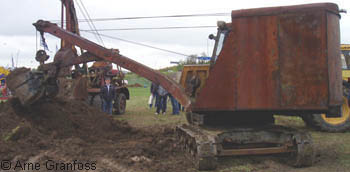Sweden's situation - 3

 UNDER CONSTRUCTION Version 0.41
UNDER CONSTRUCTION Version 0.41
|
Sweden in World War II - across borders
|
 |
![]()
![]()
Towards the end of 1944 there were more than 193 000 refugees in Sweden. Not many of them lived in special camps. [s77]
![]()
When May 1945 began, there were 200,000 German soldiers in Denmark and 200,000 German refugees from the east.
In Norway there were 350,000 well-equipped and well-trained German soldiers. [s58]
The Norwegian troops in Scotland, the military resistance Milorg and the Norwegian police soldiers educated in Sweden were together no more than around 50,000 to 60,000 men strong. [s58]
Neither Denmark nor Norway were in high priority for the western powers in the Allies final attacks on Germany. Among the Danish fears were that the Germans in Denmark would be cut off from their home country and what that would lead to, another fear that the Soviet Union troops reached Denmark first which could result in heavy fighting between them and the Germans. In Norway there were for example fears that the Germans would continue the war, or that a German defeat on the continent would lead to broken down German discipline in Norway. [s58]
(In December 1944 the Soviet Union had informed the Danish representative in Moscow, that Denmark should not take for granted that they belonged to the Anglo-American area of operations. [s58] )
Both Denmark and Norway turned to Sweden for assistance, with the point of view that the only solution was a Swedish military intervention in Denmark and Norway. [s58]
![]()
Once again Sweden decided to stay neutral. And to try to keep out of the war. [s58]
One tough discussion took part between Norway and Sweden. Norway wanted Sweden to mobilize, since they thought that would prevent the Germans from continued fighting in Norway. Sweden thought a mobilization instead would provoke the Germans in Norway. An indication from the Swedish government that they could assess the situation in Norway better than the Norwegian government, was taken by the Norwegians "with very bad grace". [s58]
However, the neutrality was stretched as far as possible to the limits. [s58]
Both at the government level, or with the government's consent, and at unofficial levels. How much higher Swedish authorities knew about all that took place, is unknown. [s58]
For example Sweden allowed that a certain quantity of Allied arms for the Danish and Norwegian resistance might pass Sweden. In case of continued German fighting in Norway, the Allies would be allowed to send troops through Sweden. [s58]
Close to the end of World War II, Sweden reacted fast and positive after Himmler's inquiry about a Swedish involvement regarding a capitulation of German troops in Norway. Internment of German troops in Sweden could be one solution. [s58]
![]()
![]()
![]()
2019-04-07. www.granfoss.se. Text/pictures: Arne Granfoss